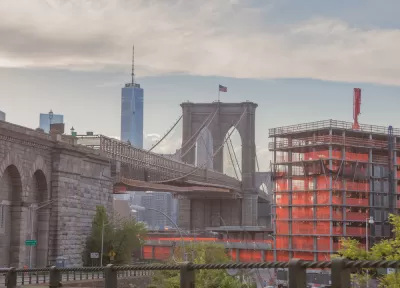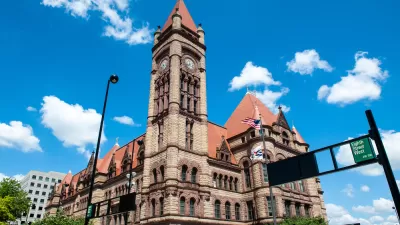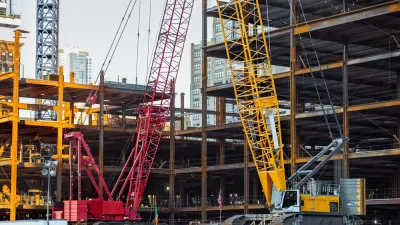The high costs of housing development do not fit a convenient narrative, according to new analysis by Jenny Schuetz from the Brookings Institution.

Jenny Schuetz lays out both sides of one of the core debates in planning in 2020:
Public debate falls into two schools of thought as to why housing costs are so high in many parts of the U.S. The YIMBY (“Yes In My Backyard”) school argues that housing is expensive because local governments—and voters—have adopted overly restrictive land use regulations that limit the construction of new housing. On the other hand, left-leaning politicians like Bernie Sanders contend that housing is expensive because “corrupt real estate developers are gentrifying neighborhoods.”
To find some clarity amid these conflicting versions of a story that matters to every American, Schuetz identifies facts about "the financial ecosystem of housing development, and discuss the ways land use regulations affect development decisions."
As an immediate example of the complications that arise when moving beyond simplistic explanations, Schuetz's list of participants in the ecosystem of the housing industry goes beyond developers and homeowners to include landowners, brokers, construction lenders, and home builders.
A clear and easy-to-understand explanation of these roles in the process of residential development follows—so the article could be construed as an explainer, demystifying a complex topic, rather than just drawing attention to the complexities of the process.
Other concepts explored in the article include a discussion of the time value of money, regulatory barriers, and risk—so the article sill explicitly and implicitly builds a case for regulatory reform.
FULL STORY: Who’s to blame for high housing costs? It’s more complicated than you think.

Trump Administration Could Effectively End Housing Voucher Program
Federal officials are eyeing major cuts to the Section 8 program that helps millions of low-income households pay rent.

Planetizen Federal Action Tracker
A weekly monitor of how Trump’s orders and actions are impacting planners and planning in America.

Ken Jennings Launches Transit Web Series
The Jeopardy champ wants you to ride public transit.

Washington Legislature Passes Rent Increase Cap
A bill that caps rent increases at 7 percent plus inflation is headed to the governor’s desk.

From Planning to Action: How LA County Is Rethinking Climate Resilience
Chief Sustainability Officer Rita Kampalath outlines the County’s shift from planning to implementation in its climate resilience efforts, emphasizing cross-departmental coordination, updated recovery strategies, and the need for flexible funding.

New Mexico Aging Department Commits to Helping Seniors Age ‘In Place’ and ‘Autonomously’ in New Draft Plan
As New Mexico’s population of seniors continues to grow, the state’s aging department is proposing expanded initiatives to help seniors maintain their autonomy while also supporting family caregivers.
Urban Design for Planners 1: Software Tools
This six-course series explores essential urban design concepts using open source software and equips planners with the tools they need to participate fully in the urban design process.
Planning for Universal Design
Learn the tools for implementing Universal Design in planning regulations.
Heyer Gruel & Associates PA
Ada County Highway District
Institute for Housing and Urban Development Studies (IHS)
City of Grandview
Harvard GSD Executive Education
Toledo-Lucas County Plan Commissions
Salt Lake City
NYU Wagner Graduate School of Public Service





























